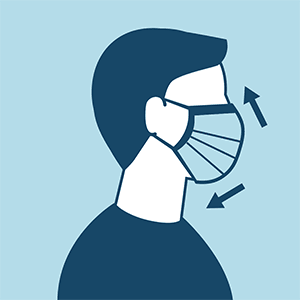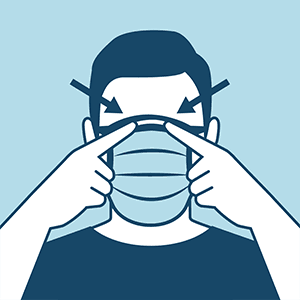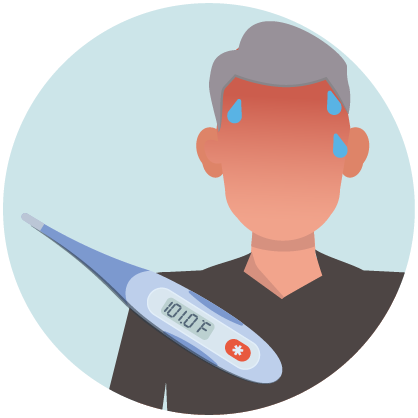
Breaking News
Published October 23, 2018
Reviewed March 2020

cyano66/iStock/Getty Images Plus/Getty Images
Although you may not be able to fully prevent an illness this season, a healthy immune system is one way to give your body extra protection. Focusing on nutrient-rich foods and healthy lifestyle behaviors can help you and your family stay a step ahead. Immune-Supporting NutrientsThe following nutrients play a role in the immune system and can be found in a variety of foods:
Focus on BalanceTo help keep your immune system healthy all year long, focus on a balanced eating plan, adequate sleep and stress management. Aim for five to seven servings of vegetables and fruits daily to get vitamins, minerals and antioxidants that may support immune health. Good hygiene and hand-washing help prevent the spread of germs. Remember to wash produce before eating or using in recipes. Clean glasses, forks, spoons and other utensils to reduce the spread and growth of bacteria. Find healthy and appropriate ways to cope with stress, such as meditation, listening to music or writing. Physical activity also is a great way to help manage stress and may help reduce the risk of some chronic diseases that could weaken your immune system further. Lack of sleep contributes to a variety of health concerns, such as a weakened immune system. Seven to nine hours is recommended each day for adults, and children need eight to 14 hours, depending on their age. What About Herbals?Many herbal remedies are marketed to help fight colds or shorten their duration but check with your health care provider before taking any supplements or medications. No one food or supplement can prevent illness. |
From The Centers for Disease Control and Prevention
Use of Cloth Face Coverings to Help Slow the Spread of COVID-19How to Wear a Cloth Face Covering Cloth face coverings should—
CDC on Homemade Cloth Face CoveringsCDC recommends wearing cloth face coverings in public settings where other social distancing measures are difficult to maintain (e.g., grocery stores and pharmacies), especially in areas of significant community-based transmission. CDC also advises the use of simple cloth face coverings to slow the spread of the virus and help people who may have the virus and do not know it from transmitting it to others. Cloth face coverings fashioned from household items or made at home from common materials at low cost can be used as an additional, voluntary public health measure. Cloth face coverings should not be placed on young children under age 2, anyone who has trouble breathing, or is unconscious, incapacitated or otherwise unable to remove the mask without assistance. The cloth face coverings recommended are not surgical masks or N-95 respirators. Those are critical supplies that must continue to be reserved for healthcare workers and other medical first responders, as recommended by current CDC guidance.  Should cloth face coverings be washed or otherwise cleaned regularly? How regularly?Yes. They should be routinely washed depending on the frequency of use. How does one safely sterilize/clean a cloth face covering?A washing machine should suffice in properly washing a face covering. How does one safely remove a used cloth face covering?Individuals should be careful not to touch their eyes, nose, and mouth when removing their face covering and wash hands immediately after removing. |
Watch for symptoms
Reported illnesses have ranged from mild symptoms to severe illness and death for confirmed coronavirus disease 2019 (COVID-19) cases.
These symptoms may appear 2-14 days after exposure (based on the incubation period of MERS-CoV viruses).
- Fever
- Cough
- Shortness of breath
 |
 |
 |

Women's History Month is celebrated in March, to highlight the contributions of women in history and contemporary society. International Women’s Day is March 8.
Women’s History Month began in 1911 when the California school district of Sonoma started a Women’s History Week. It wasn’t until 1980 that President Jimmy Carter issued a presidential proclamation declaring the week of March 8, 1980, as National Women’s History Week.
The proclamation stated: “From the first settlers who came to our shores, from the first American Indian families who befriended them, men and women have worked together to build this nation. Too often the women were unsung and sometimes their contributions went unnoticed. But the achievements, leadership, courage, strength and love of the women who built America was as vital as that of the men whose names we know so well … .”
Throughout the next several years, Congress continued to pass joint resolutions designating a week in March as Women’s History Week. In 1987, March was officially declared Women’s History Month by Congress.
International Women’s Day (IWD) on Sunday 8 March in 2020 will focus on the theme: I am Generation Equality: Realizing Women’s Rights, or put quite simply: ‘An equal world is an enabled world’.
The theme is aligned with UN Women’s new multigenerational campaign, Generation Equality, which marks the 25th anniversary of the Beijing Declaration and Platform for Action.
The year 2020 is a pivotal year for advancing gender equality worldwide, as the global community takes stock of progress made for women’s rights since the adoption of the Beijing Platform for Action in 1995. It will also mark several other galvanizing moments in the gender equality movement: a five-year milestone towards achieving the Sustainable Development Goals; the 20th anniversary of UN Security Council resolution 1325 on women, peace and security; and the 10th anniversary of UN Women.
Despite some progress, real change has been agonizingly slow for the majority of women and girls in the world. Today, not a single country can claim to have achieved gender equality. Multiple obstacles remain unchanged in law and in culture. Women and girls continue to be undervalued; they work more, earn less and have fewer choices; and experience multiple forms of violence at home and in public spaces.
Individually, we’re all responsible for our own thoughts and actions – all day, every day.
We can choose to challenge stereotypes, fight bias, broaden perceptions, improve situations and celebrate women’s achievements.
Collectively, each one of us can help create a gender equal world.
The year 2020 represents an unmissable opportunity to mobilize global action to achieve gender equality and human rights of all women and girls.
Let’s get the message out there! #EachforEqual, #GenderEquality
Page 1 of 2

